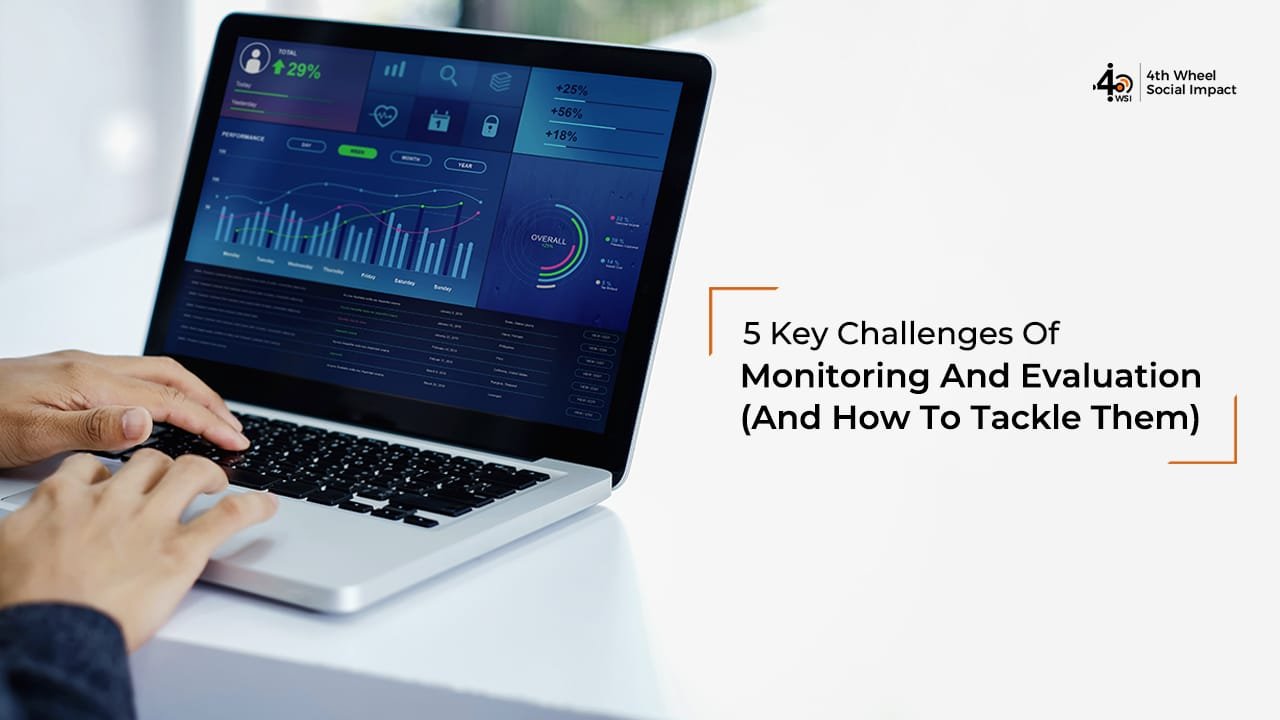Organisations across the world rely on monitoring and evaluation to measure the success of their initiatives, processes, and operations. But what are some key challenges associated with this type of data collection and analysis? Below are some of the challenges you might face when implementing your M&E assessment, and practical solutions to address these.
Top 5 Challenges Of Monitoring And Evaluation
Managing Time and Resources
Not surprisingly, finding the time and resources to conduct continuous and comprehensive evaluation processes is one of the biggest challenges. Monitoring and Evaluation can often fall to the bottom of the priority list as other activities take up more of the organisation’s resources.
Even for an on-going M&E process, it is a race against the clock as designing and implementing a monitoring system can be challenging. To compensate, steps are removed from the process in order to save time.
It is up to the evaluator to understand the organisation and its goals, get buy-in from stakeholders on the indicators and measures of success, and then develop and propose a monitoring system. Scope, Scope and Scope again!
After a pilot run with well resourced M&E you should have no trouble using your insights to grow your funding base and your work.
Balancing Culture+Attitude
Monitoring and Evaluation is more than one any individual activity or process – it is about having a team which focuses on learning and adopting a growth mindset. If the right culture isn’t in place, then monitoring and evaluation can feel like its purpose is to criticise and identify failures.
When done correctly and with the appropriate attitude, M&E can be a key element to building a healthy climate within an organisation, embracing mistakes as part of the learning process, and allowing individuals to learn and grow without fear of retaliation.
Bringing a broad knowledge of different approaches significantly benefits the organisation and its employees as you aim to change mindsets and bring people together in the idea that M&E can be a means to sustainable development and growth.
Avoiding Bad Data
Data is living, it provides little windows into what is actually taking place, and it needs to be cultivated, over its lifespan, with care. There are typical problems in M&E that must be ironed out, particularly in the data-collection processes before an efficient solution is found.
As part of the impact insight assembly line, be sure to create systems that minimise the possibility of bad data by cleverly using dropdowns and incentives as well as creating inbuilt accountability and verification systems. Pre-work, if you do it correctly, will result in a leaner logic, and cleaner data, so the more pre-work you do, the better result you procure in impact evaluation.
Using Modelled Frameworks
Depending on the size of the organisation, and on objective priorities and several other factors, it’s essential to design a continuous and comprehensive evaluation process.
Else, it leads to using the wrong methods to collect data, failure to understand how to identify the data properly, failure to comprehend outputs and outcomes, and therefore failure to select the right evaluator for your project. These factors eventually lead to differences between stakeholders and practitioners, and/or unsatisfied results.
A good knowledge of the subject matter surrounding your project will best enable you to ask the right questions, to make the right assumptions, and to guide you to make a result oriented framework.
Involving Stakeholders Effectively
The goals of a monitoring system, as well as the desired outcomes or reports, may be very different depending on who you ask among the stakeholders.
Impact analysis can be extremely challenging when trying to design a monitoring system that meets the needs of the organisation, but also provides meaningful information for all stakeholders.
It is a good idea to ensure that you have a good understanding of the context, and what is important to key stakeholders.We all want the same good things, after all. Know your hypothesis. Have a system that eases the communication with stakeholders of their experiences, expectations, satisfaction and dissatisfaction.
M&E’s theory of change requires a lot of thought and effort. It’s important to keep an open mind and remain flexible while navigating through the process. Being receptive to feedback from stakeholders can be crucial in achieving successful implementation results in the end.
An effective monitoring and evaluation system should be able to adapt to changing conditions and goals in order to give an accurate assessment of the success or failure of a project.
This is one of the many challenges that must be faced when developing a Monitoring and Evaluation system, but if it is done properly it can provide invaluable insight into how best to reach the desired outcome.
It’s simple, organisations that are willing to commit resources to monitoring and evaluation will be able to reap the rewards of better data collection, enhanced decision-making, greater understanding of their customers, and improved efficiency.
We would like to thank ActivityInfo for providing some of the information found in this article here.




